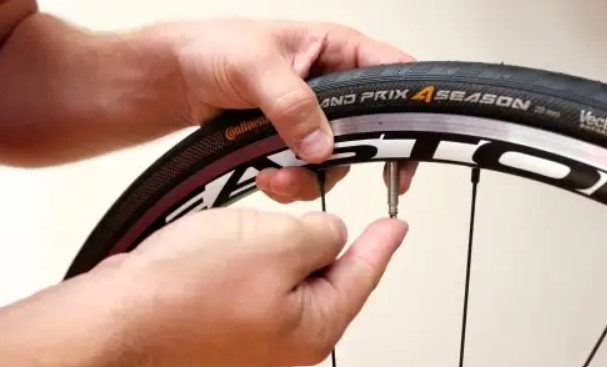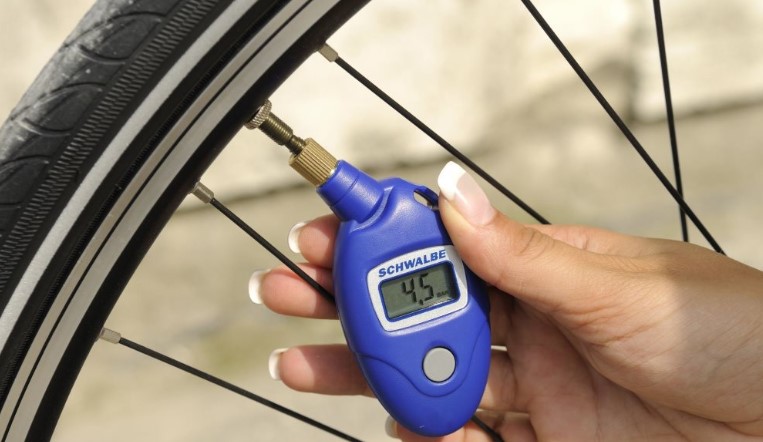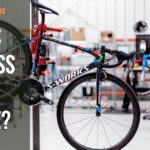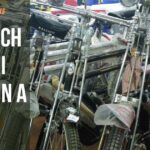Your bike tires are among the most super important parts of your cycling experience, and maintaining the correct tire pressure is key to a safe and enjoyable ride. Overinflated tires can cause a harsh, bouncy ride, while underinflated tires can lead to flats and affect your bike’s performance. This comprehensive guide will delve into all aspects of bike tire pressure, making sure you have all the knowledge necessary to keep your ride smooth and efficient.
What is Bike Tire Pressure?
Bike tire pressure refers to the amount of air inside your bicycle’s tires, measured in pounds per square inch (psi). It’s a critical factor that influences not just your ride quality but also the longevity and efficiency of your tires.

Importance of Understanding Tire Pressure:
- Ride Quality: The right tire pressure ensures a comfortable ride. Overinflation can cause your bike to bounce on uneven surfaces, while underinflation can make it feel sluggish and harder to pedal.
- Traction and Control: Your grip on the road depends significantly on tire pressure. Overinflated tires reduce the contact area with the ground, compromising traction. Conversely, underinflated tires can deform and lose their grip, especially while cornering.
- Rolling Resistance: This is the energy your bike requires to maintain motion. Overinflated tires lower rolling resistance, making it easier to pedal and maintain speed. Underinflated tires increase resistance, requiring more effort to ride.
- Risk of Flats: Properly inflated tires are less prone to flats. Underinflation increases the risk of ‘pinch flats’, a common problem caused by the tire being compressed against the rim.
Why is Bike Tire Pressure Important?
Understanding and maintaining the right bike tire pressure is super important for several reasons:
- Ride Quality: The pressure in your bike tires directly affects the comfort of your ride. Overinflated tires can make your ride harsh and bouncy, while underinflated tires might feel sluggish and difficult to maneuver.
- Traction: Tire pressure also influences traction, which is super important for safe cornering and braking. Overinflated tires might have less grip due to reduced surface area contact with the road, whereas underinflated tires can deform and lose traction.
- Rolling Resistance: This refers to the effort needed to keep your bike moving. Overinflated tires have lower rolling resistance, making pedaling easier, whereas underinflated tires increase resistance, making your ride more strenuous.
- Risk of Flats: Tires with too little air are more prone to punctures and flats, as they can’t adequately repel sharp objects or absorb impacts.
How to Check Your Bike Tire Pressure

Regularly checking your tire pressure is vital for maintaining optimal performance. To do this, you’ll need a reliable tire pressure gauge. Follow these steps:
- Remove the Valve Cap: Start by taking off the cap from the tire’s valve.
- Apply the Gauge: Press the tire pressure gauge firmly onto the valve stem. Ensure it’s properly seated to get an accurate reading.
- Read the Pressure: The gauge will then display the current psi level in your tire. Compare this with the recommended pressure for your bike.
How to Set Your Bike Tire Pressure
Setting the right tire pressure is really key for an optimal riding experience. Here’s how to do it correctly:
- Find the Recommended Pressure: This information is usually found in your bike’s owner’s manual or on the tire sidewall. The recommended psi varies depending on bike type and rider weight.
- Using a Pump: Use a floor pump or hand pump to inflate your tires. Ensure the pump is compatible with your valve type.
- Inflating to the Right Pressure: Pump your tires to the desired pressure. Avoid overinflation as it can lead to reduced traction and a harsh ride.
Considerations for Setting Pressure:
- Rider Weight: Heavier riders might need higher pressure for optimal performance.
- Riding Conditions: Lower pressure can be beneficial for off-road or slippery conditions for better grip, while higher pressure is ideal for smooth, paved surfaces.
- Tire Width: Wider tires generally require lower pressure compared to narrow road bike tires.
Troubleshooting Common Bike Tire Pressure Problems

Even with the best practices, you may encounter some issues related to tire pressure. Here’s how to troubleshoot them effectively:
- Persistent Loss of Pressure: If your tires are consistently losing air, inspect them for punctures or valve issues. Sometimes, the problem could be a small tear or hole that can be repaired with a patch kit.
- Overinflation Adjustments: If you’ve overinflated your tires, release some air until you reach the recommended pressure. Overinflation can compromise your ride’s comfort and tire grip.
- Underinflation Solutions: If your tires are underinflated, simply add air. Remember, consistent underinflation not only affects ride quality but can also cause damage to the tire and rim.
Preventive Measures:
- Regularly inspect your tires for wear and tear.
- Invest in quality tires that offer better puncture resistance.
- Consider using tire liners or sealants for added protection.
The Role of Tire Pressure in Different Riding Conditions
Adjusting tire pressure based on riding conditions can significantly improve your experience.
- Road Biking: For smooth, paved surfaces, higher pressure ensures lower rolling resistance and faster rides.
- Mountain Biking: Lower pressures are preferred for off-road conditions as they provide better grip and shock absorption on rough terrains.
- Wet Conditions: Slightly lower pressure can improve traction on wet or slippery surfaces.
- Racing: Racers might prefer higher pressures for maximum speed, though it’s a balance between speed and control.
Tailoring Pressure to Your Needs:
- Experiment with different pressures to find what feels best for your riding style and conditions.
- Remember that comfort is as important as efficiency. Don’t sacrifice one for the other.
Conclusion
Maintaining the correct bike tire pressure is not just about following numbers; it’s about understanding your bike’s interaction with different surfaces and conditions. It’s a balance between comfort, efficiency, and safety. By paying attention to your bike’s tire pressure, you’re not only making sure a smoother ride but also prolonging the life of your bike.
For more resources and information on biking, don’t forget to visit our homepage at Best Bike Parks. Whether you’re a casual rider or a seasoned cyclist, keeping your bike tires at the right pressure is a simple yet effective way to enhance your cycling experience.







